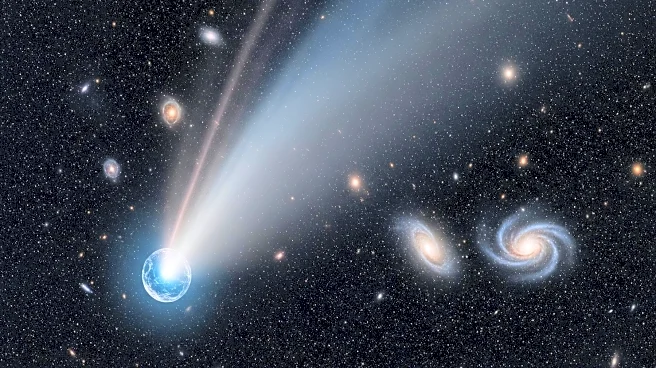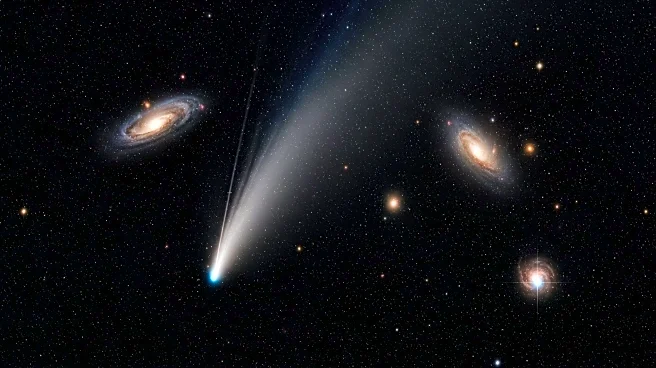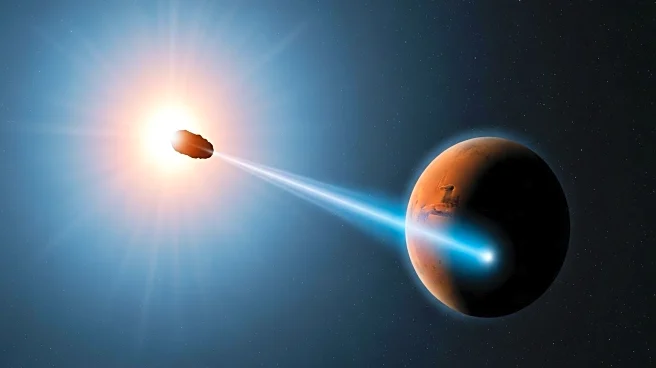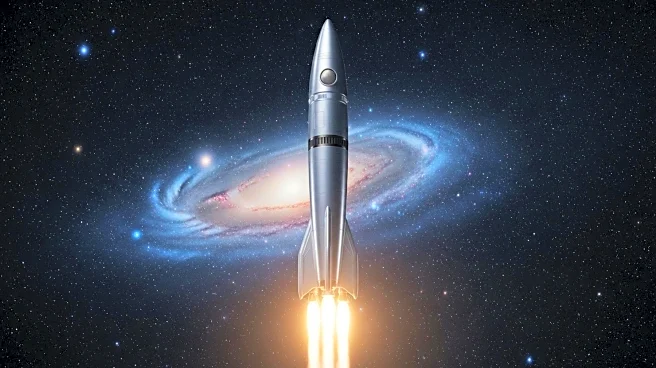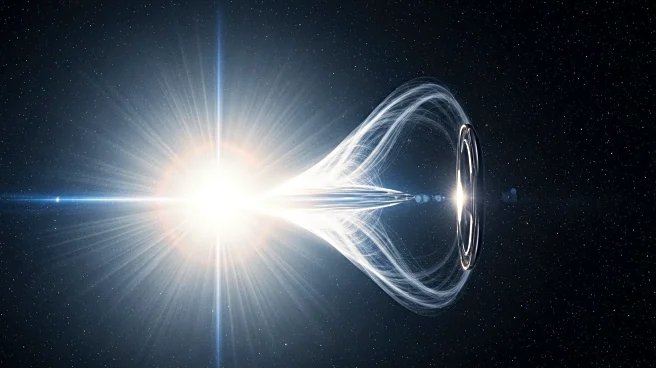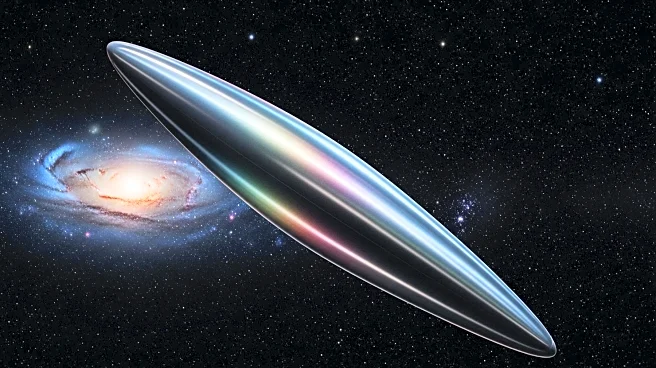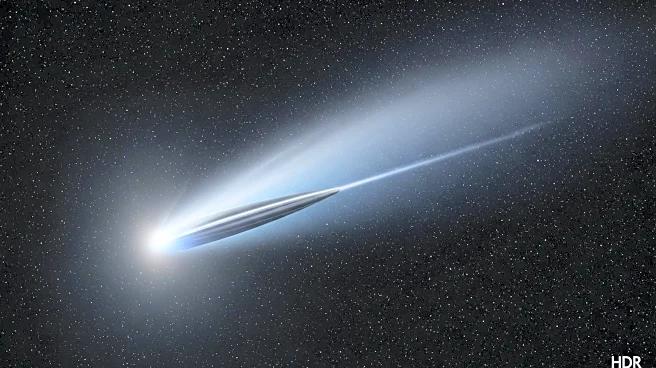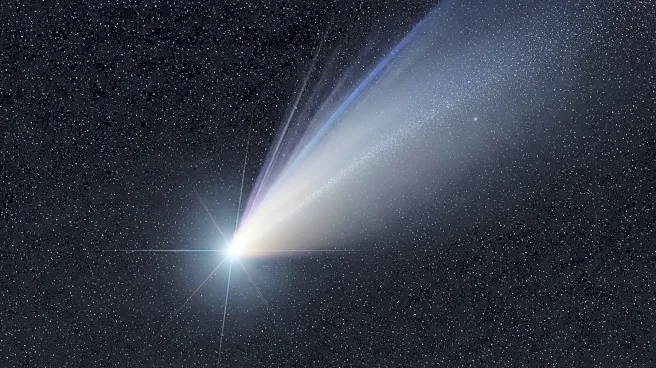What's Happening?
Astronomers have identified an unusually large interstellar comet, 3I/ATLAS, which appears to be significantly more massive than previously observed interstellar objects. The comet's size, estimated to be up to three miles long, challenges existing expectations about the nature and behavior of such objects. The research, conducted by Richard Cloete, Peter Vere, and Harvard astronomer Avi Loeb, suggests that 3I/ATLAS exhibits minimal non-gravitational acceleration, indicating a substantial mass. Observations from the James Webb Space Telescope estimate the comet's mass loss at 150 kilograms per second, with a gas outflow of 440 meters per second, suggesting a nucleus mass of 33 billion tons. This discovery prompts a reevaluation of the types of objects that populate interstellar space.
Why It's Important?
The discovery of 3I/ATLAS is significant as it challenges current models of interstellar object populations. The comet's massive size suggests that astronomers may need to reconsider the frequency and scale of such objects in space. If smaller interstellar objects like 'Oumuamua are more common, it implies that larger objects like 3I/ATLAS are rarer than previously thought. This could impact our understanding of the distribution and composition of interstellar debris. The findings also raise questions about the potential technological origins of such objects, although most experts maintain that 3I/ATLAS is a natural comet.
What's Next?
As 3I/ATLAS approaches Mars on October 3, further observations are expected to provide additional data on its characteristics. The HiRISE camera on NASA's Mars Reconnaissance Orbiter and the Juno spacecraft near Jupiter may offer new insights into the comet's surface area and composition. These observations could refine our understanding of interstellar objects and their behavior, potentially leading to new models of planetary system debris. The ongoing study of 3I/ATLAS will continue to intrigue astronomers and may challenge existing theories about interstellar space.
Beyond the Headlines
The discovery of 3I/ATLAS opens discussions about the possibility of technological origins for interstellar objects. Avi Loeb has suggested that the comet's unusual mass and trajectory could indicate something more complex than a natural comet. This perspective, while controversial, highlights the need for open scientific inquiry and the importance of data in understanding cosmic phenomena. The presence of nickel without iron in the comet's composition further fuels speculation about its origins, prompting debates within the scientific community.

